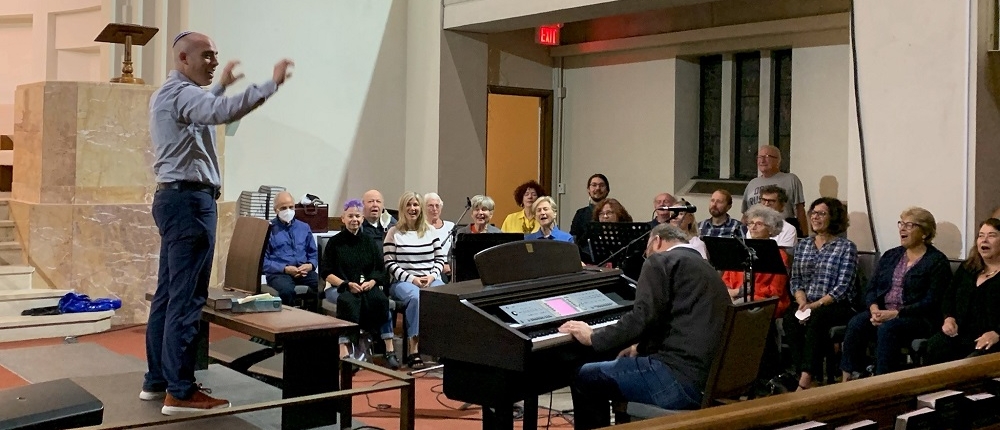Our Cantor, the “Southpaw”
Many people use the term southpaw to describe a left-handed pitcher in baseball. This term has been around since the 1800s. The paw in southpaw is slang for “hand,” but what does south refer to?
It’s popularly reported that southpaw is related to baseball diamonds facing west in the 1800’s so that batters did not have to look into the sun (before lighting made night games possible). This required left-handed pitchers to be positioned south in their windup.
You may ask yourself – what does this have to do with your left-handed cantor?
It is true, that once upon a time in my youth, I was a competitive left-handed baseball pitcher. I played for the North York Blues as well as the York Mills Collegiate Titans in my teens and while I wasn’t in the same league as Sandy Koufax, I too did not play baseball on Yom Kippur!
As a “southpaw”, I have learned to do many things like a right-handed person, as it is just easier to adapt than to try to make everything work for my left hand. From playing guitar to eating with a knife and fork, I have managed to make many of these things work for me. However, as any left-handed person will tell you, some things are just too difficult to do with your right hand. I definitely cannot throw a ball or play golf left-handed and my handwriting is completely illegible if I used my right hand.
While singing is not dominated by a particular hand, there are other musical tasks that do require coordination and the use of one’s dominant hand. For me, it is conducting. I have tried over the years to ‘pass the baton’ to my right hand, to wave in a consistent 3/4 or 4/4 pattern and yet, what seems like a relatively simple matter to overcome, is nearly impossible for my left-dominated side to master.
Historically, Holy Blossom has the rabbi standing on the left side of the bima (facing the congregation) and the cantor on the right side. For many years, the choir sang in the side pews off to the cantor’s right side. Some of you may remember when the choir sang from the balcony or choir loft behind the bima fretwork. While the current configuration seems relatively straightforward, it is very challenging for your left-handed cantor to conduct the choir while reaching across his body or worse, turning his back to the congregation.
So how do we solve this conundrum?
It is quite easily solved in a two-step process. First, we switch the position of the rabbi and cantor, and second, we bring the choir to the other side of the bima. We will experiment with this change during the High Holy Days.
Because the number of choir members and our instrumentalists has increased, we will temporarily replace a few side pews with chairs in order to accommodate everyone. During this “experiment”, we can assure you that our Facilities Team, quarter-backed by our Senior Property & Facilities Manager, Bridgedat Ramcaran, will treat the pews with the utmost care and can easily restore this section of seating to the original configuration at any time.
As a trial for this coming High Holy Days, I invite all of you to embrace this change, to help me and your clergy team in our efforts to create the optimal High Holy Days experience for you, whether you participate at 1950 Bathurst Street or from your own home.
If you have any questions or concerns, I encourage you to reach out to the Vice President of the Worship Department, Gerry Prendergast, Rabbi Splansky or me to discuss.
Wishing you and your family a Happy and Healthy New Year ahead!!
L’shanah Tovah Tikateivu,
Cantor David Rosen



